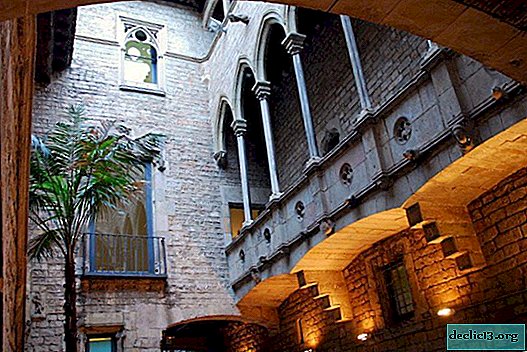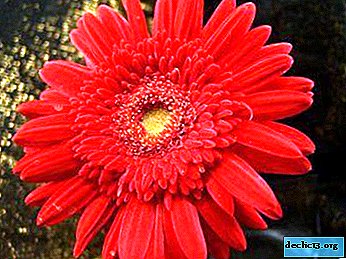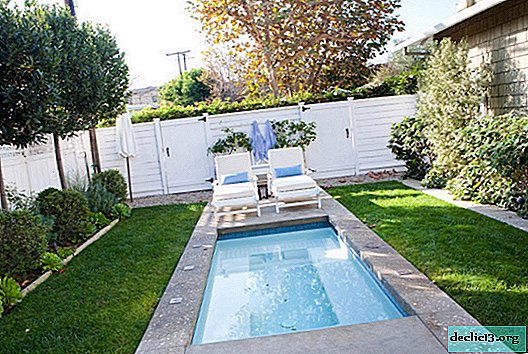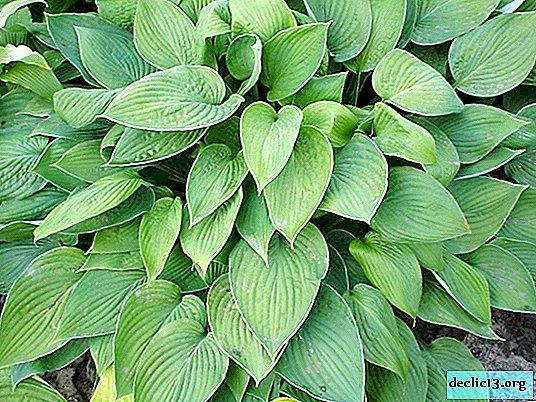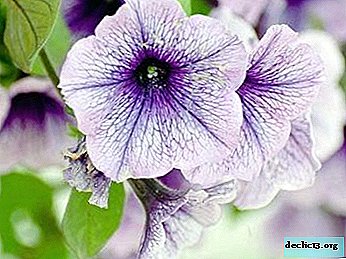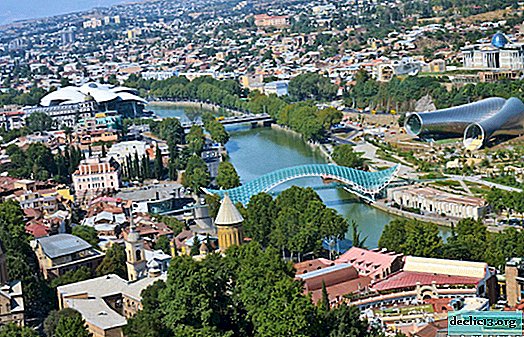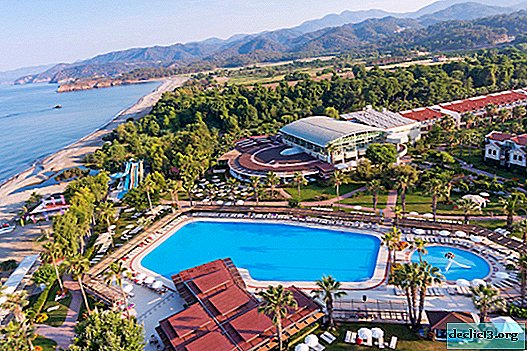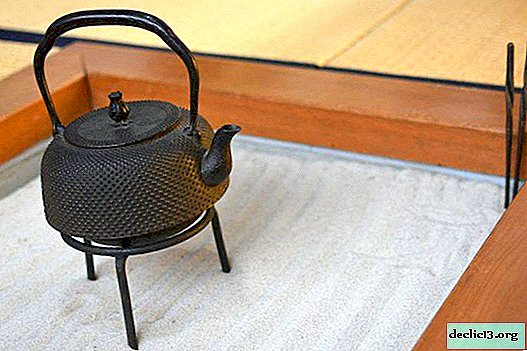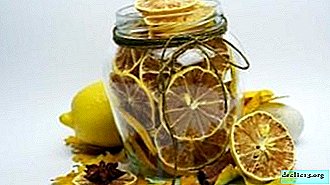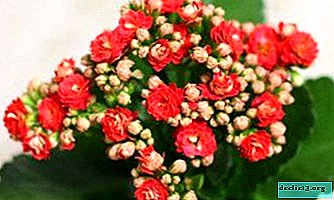All About Yesenia Gloxinia: Propagation Features and Useful Tips for Proper Care
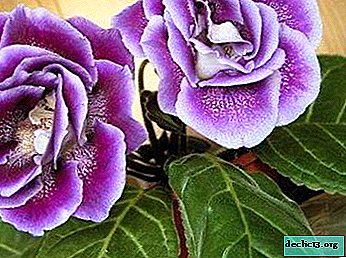
Florists have long appreciated such a flower as gloxinia. In some cities, admirers of this plant even hold contests and reviews of the best varieties, which award winners who have bred new varieties of gloxinia. And they appear almost every year, because it is impossible to resist the desire to improve an already excellent flower.
But it is important to know how to care for him, what are the features, the rules of reproduction. Then the flower will delight you with its beauty.
Botanical description and history of origin
It also has a second name - synningia.. The first name was given in honor of the discoverer and explorer Benjamin Peter Gloksin. And the second - in honor of the breeder who was actively involved in the cultivation of these plants - V. Sinning.
It is a grassy perennial growing from tubers. Peduncles are short, but with proper care they can stretch up to 30 cm in height, often bend under the weight of the buds. At the same time, about two dozen flowers can bloom on Yesenia, which have a bell-shaped shape (to some it resembles a rose, not a bell) with a diameter of 7-12 centimeters. There are saturated raspberry or maroon colors. And when the bud is fully opened, a delicate white border appears at the edges. There are many petals, they are velvet to the touch.
Leaves leave the root outlet on a decent cuttings length and are arranged in a circle of shoots. They also have a velvety surface. They have a dark green color.
REFERENCE! Deciduous forests of South and Central America are recognized as the homeland of Gloxinia. But you can meet her on the rocky river banks or dense forest thickets. It first came to the European continent in the 19th century and became popular as a houseplant.Appearance
It looks like a small bushy flower. Compact, but attracts attention due to the bright colors and leaves, and flower corollas. The maximum space that the plant will occupy in your house will not exceed 30 cm in length and the same number in width. Due to its velvet surface it has a rich appearance and is considered especially difficult to maintain, although in fact it is completely unpretentious, and even a beginner grower can breed gloxinia.
A feature of synningia can be considered the fact that it has a dormant period (usually this happens in winter) and at this time it completely discharges the ground part and sends all the nutrients to root tubers. Do not be afraid of such gloxinia behavior - this is a natural process, however, care should in no case be stopped. It should be as follows:
- Watering is reduced to once a month.
- Top dressing is generally excluded;
- After the complete death of the ground part, move to a cool place.
- Tubers are recommended to be taken out of the soil and placed in dry sawdust.
This should be around mid-January. At the end of this time, the rhizomes are planted in a renewed moistened soil and placed in normal conditions.
Photo
Below you can see a photo of a wonderful flower:




Landing tips
Plan this event for early March. At this time Yesenia begins to awaken, but has not yet let out the leaves. Use small pots for planting, they can be plastic or clay.
What soil to prepare?
For this flower, the same mixture is suitable as for violets. It can be purchased at the store. But you can cook everything yourself. For this you will need:
- deciduous humus (1 part);
- leaf soil (1 part);
- sand (preferably river) (1 part);
- peat (2 parts);
- turf land (2 parts).
Mix all these components. The acidity of the soil should be kept weak (vary between 5.5 - 6.5 pH).
IMPORTANT! You should be aware that over the year, the salt content in the soil increases, so every season it needs to be updated.You can use coconut soil, but its acidity is often weak or neutral. Use chopped pine bark to increase.
Lighting and location selection
 Gloxinia loves a lot of light, but it must be scattered. An ideal option would be to place a pot with a plant on the east or west side of the room. If you can’t avoid the southern side, be sure to shade this place so that the sun's rays do not injure the delicate leaves of the plant. You can hang paper or foil on the window.
Gloxinia loves a lot of light, but it must be scattered. An ideal option would be to place a pot with a plant on the east or west side of the room. If you can’t avoid the southern side, be sure to shade this place so that the sun's rays do not injure the delicate leaves of the plant. You can hang paper or foil on the window.
On hot days, take care of ventilating the room. Sinningia can’t stand the stuffiness, because of this it will begin to drop flowers. and the leaves will become dry and gradually fall away. The most unfavorable place is the closed balcony, especially at noon. By airing you also harden the plant. But avoid drafts and sudden changes in temperature.
Yesenia is one of the few varieties that requires a long daylight hours (up to 14 hours). Therefore, to ensure this condition, resort to the help of artificial lighting, especially for young plants. With a lack of light, the plant stretches, and flowering is inhibited.
Velvet Beauty Care
Watering
Sinningia loves plentiful watering. But it is better to introduce water into the soil through a sump. In case of watering from above, be careful not to hit the flowers and leaf plates. Take care of the presence of a drainage layer so that the water does not stagnate in the flowerpot.
You need to water the flower after two days after drying of the top layer of soil. Water should not contain harmful chemical impurities and be slightly warmer than room temperature. Cool water is especially destructive during the formation of buds and their flowering.
At the end of August, watering is reduced, thereby preparing gloxinia for the rest period. But there are times when even at this time, the syningia does not reset the ground units. Stop watering completely and wait for the leaves and flowers to dry, and after yourself cut off the dead parts.
TIP! Yesenia is used to being in a room with well-humidified air. It is better to create this condition with the help of a container with water or a tray with expanded clay. But refuse help of spray guns.Top dressing
 Within a month and a half after updating the soil, nutrients will be there in sufficient quantities. After this time, you need to turn to additional recharge. For our flower, the same complexes are well suited as for any flowering indoor crops, in particular for violets.
Within a month and a half after updating the soil, nutrients will be there in sufficient quantities. After this time, you need to turn to additional recharge. For our flower, the same complexes are well suited as for any flowering indoor crops, in particular for violets.
Fertilizers are recommended every seven days, diluting them with irrigation water. Note that the concentration should be less than the recommended on the package by about 2-3 times. Prefer top dressing with a high content of phosphorus and potassium, but it should have a minimum of nitrogen, which adversely affects the flowering of synningia.
Temperature mode
The optimum temperature in the active period is 20-22 degrees above zero during the day and 18 degrees of heat at night. During wintering, indicators recommend reducing to 14 degrees.
Diseases and Pests
Disease:
- Yellow castings signal you to dry, too warm air and excessive feeding. Also, twisted foliage will notify you of these inappropriate conditions.
- Brown pigmentation is burns from the burning sun. Or is it a sign that the plant is freezing or the water for irrigation is not warm enough.
- Leaf plates lose their saturated spectacular color due to dampness in the room, while the flower itself is greatly extended.
- Leaves can turn not only yellow, but also red. This synningia reports a lack of phosphorus, which directly affects its flowering.
- The lack of buds is explained by an excessive amount of nitrogen in fertilizers, which will give an impetus only to the growth of the green part of gloxinia.
- Due to excessive watering and inappropriate acidity of the soil, cuttings and buds rot. In addition to transplanting and adjusting soil moisture, treat the tuber with a fungicide. If all these measures do not save, then the problem is in the rhizome itself, most likely he died.
- The buds are dry due to too dry air. Do not forget to moisten it periodically.
- All foliage withers. This is not a disease, but preparation for wintering. Wait for all leaves to fade. and remove them from the flower.
Pests:
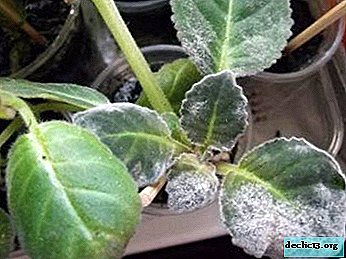 Gray rot. This pest can be recognized by the presence of a gray fluffy coating on the ground part of the plant. This disease is accompanied by sudden decay of the whole flower. To prevent the occurrence of this pest, ventilate the room more often and adjust the frequency of watering. Gray rot is treated with a fungicide solution with a break of a week.
Gray rot. This pest can be recognized by the presence of a gray fluffy coating on the ground part of the plant. This disease is accompanied by sudden decay of the whole flower. To prevent the occurrence of this pest, ventilate the room more often and adjust the frequency of watering. Gray rot is treated with a fungicide solution with a break of a week.- Powdery Mildew This is a fungal disease. It differs by the appearance of white plaque throughout the plant. This parasite loves damp rooms and very moist soil. Therefore, carefully monitor these factors. The reason for the attack of this pest may be the soil itself, which was already infected. If the disease has not spread much, you can save Yesenia by treating fungicide. At the same time, neighboring plants need to be processed. It is necessary to get rid of a flower if powdery mildew has gained mass momentum.
- Downy mildew or peronosporosis. Another disease with a fungal nature. It develops due to sudden changes in temperature and irrigation with rainwater. It is characterized by discolored spots of various shapes on the leaf plate, which gradually become brown and dry. At the same time, plaque is observed on the back of the sheet. After detecting the disease, you need to remove the affected leaves. and treat the rest with Previkur or the like.
- Thrips. The most common “hitters”. They are represented by insects that feed on gloxinia sap, thereby killing it. Signs of thrips are light dotted spots on leaf blades. As soon as you notice this disease, immediately isolate the syningia from other indoor crops and treat it with insecticidal solutions.
Propagation Features
Yesenia can be propagated in three ways:
- cuttings;
- tuber division;
- seeds.
The first method is suitable for summer.
- Take a healthy large leaf, divide it horizontally into three parts, get rid of the cuttings and place the segments of the leaf in the ground, deepened to a level of 0.5 cm. In this case, create greenhouse conditions by covering the container with a film.
- Ventilate the sprouts daily and remove the resulting liquid.
- After 20 days, the first roots will appear on the cuttings and you can plant them in separate "houses".
Tuberous reproduction after wintering just before planting the roots in the ground. It is necessary to divide the tuber so that a sprout remains on each part. Cut off parts must be sprinkled with wood ash. The flowerpot for planting should not be more than 15 cm in diameter. And the temperature should not be lower than 20 degrees.
For sowing gloxinia, purchase seeds from the store. They need to be sown at the end of winter, having spread the planting material over the entire surface of the soil, after moistening it first. Cover the drawer with seedlings with foil and place in a warm place. Every day for 30 minutes the seeds are aired. After entering the first shoots, the film is removed and the container is rearranged in a well-lit place. After the appearance of 2-3 leaves, seedlings are stopped in separate pots. 6 months after this Yeseniya procedure, it should please you with its flowering.
Follow all the above recommendations and you can enjoy the magnificence of the velvet beauty for a very long time.

 Gray rot. This pest can be recognized by the presence of a gray fluffy coating on the ground part of the plant. This disease is accompanied by sudden decay of the whole flower. To prevent the occurrence of this pest, ventilate the room more often and adjust the frequency of watering. Gray rot is treated with a fungicide solution with a break of a week.
Gray rot. This pest can be recognized by the presence of a gray fluffy coating on the ground part of the plant. This disease is accompanied by sudden decay of the whole flower. To prevent the occurrence of this pest, ventilate the room more often and adjust the frequency of watering. Gray rot is treated with a fungicide solution with a break of a week.